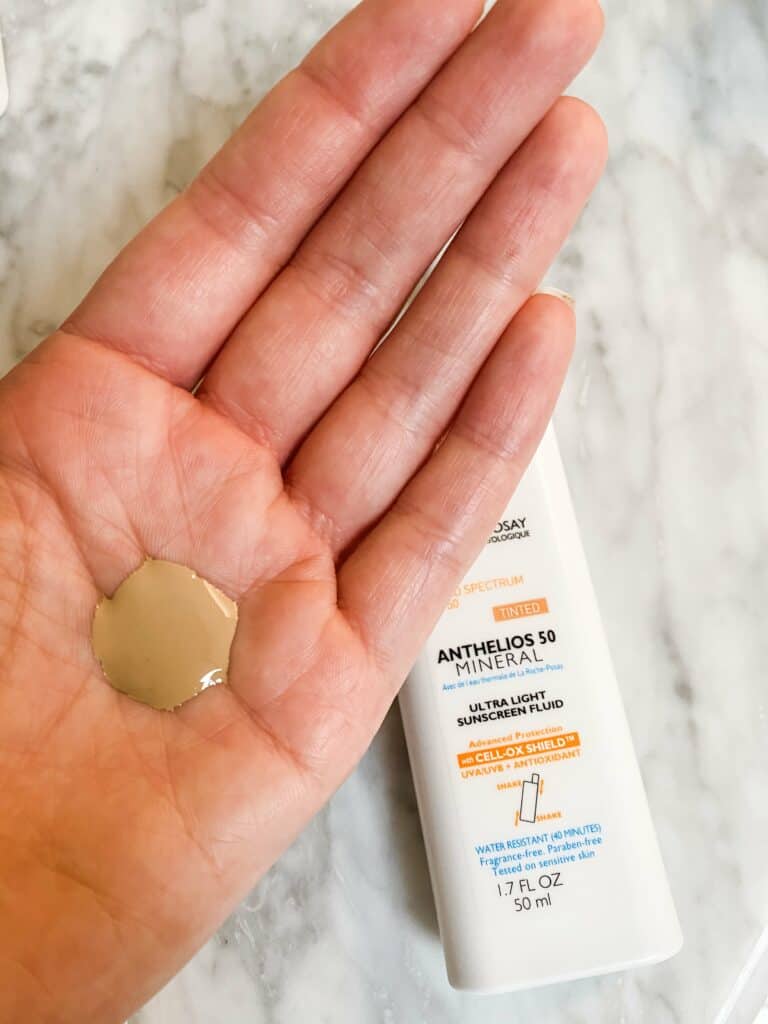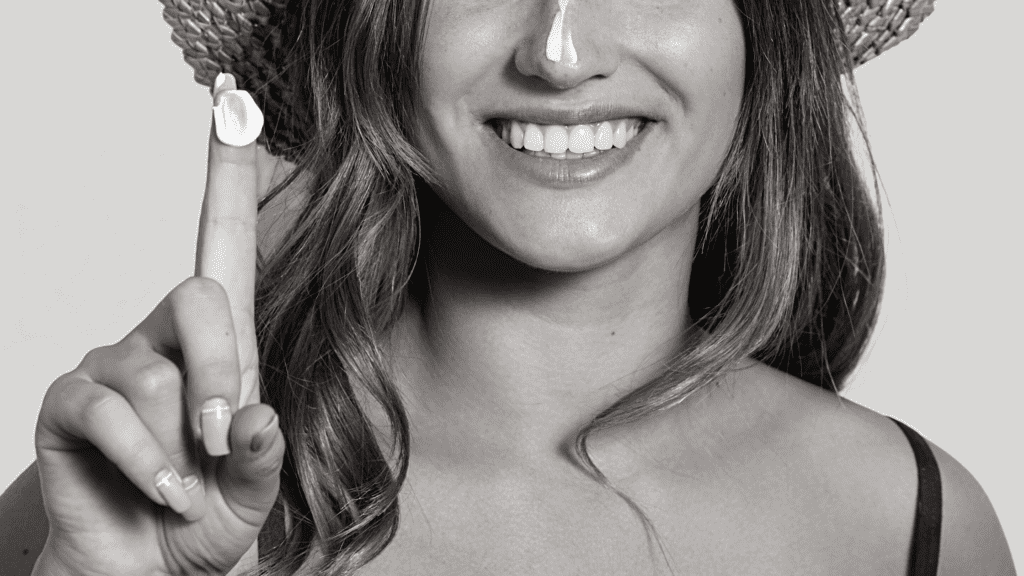This easy guide lays out the difference between sunscreen and sunblock – it’s super easy to remember! Plus, I give my opinion on why it matters and which one to go for.

Difference Between Sunscreen and Sunblock: Suncare Definitions
To cut to the chase, here are definitions:
Sunblock: blocks out the sun’s rays physically and reflects them away from the skin.
Sunscreen: Sun rays are absorbed into the skin but are transformed into harmless wavelengths of light/heat.
Simple right? It doesn’t seem like it would be hard to choose between them, but here’s why I believe it matters: sunscreen tends to use chemical sunscreens to absorb those wavelengths in the skin. A lot of chemical sunscreens have been known to have harmful things that are called endocrine disrupters. I dive into that as well as the other pros/cons of each below.
Pros and Cons of Sunblock
Pros: Consist of mineral sunblocks that use ingredients like zinc oxide and titanium dioxide to block out the sun’s rays. You apply these sunblocks and they sit on the skin and are like your “armor” to prevent the sun’s damaging rays from reaching your skin. They reflect them off.
Zinc oxide and titanium dioxide are less toxic to the body, and most mineral sunblocks are less irriating/aggravating for problem skin. If you deal with acne, it is recommended you go with a mineral sunblock!
Cons: They typically leave behind a white cast on the skin, and almost sit like a mask. I truly do believe that nowadays companies have worked hard to combat this. They know people want to use sunblock for health reasons, but don’t want the white cast. Keep scrolling for my tested favorites that do not leave behind a white cast.
Pros and Cons of Sunscreen:
Pros: sunscreens absorb well and don’t leave behind a white cast. Sunscreen is more commonly available.
Cons: They contain hormone disrupters and lots of toxic additives typically.
There is increasing public concern regarding the harmful effects of chemicals in sunscreens and the science is worth reviewing. The three main classes of chemicals that are the main cause of concern are benzophenones, camphor derivatives (such as 4-methyl benzylidene camphor or 3-benzylidene camphor) and cinnamate derivatives (such as octyl methoxycinnamate, isopentyl-4-methoxycinnamate; octocrylene).
NCBI
This causes lots of problems for our bodies, like developmental and reproductive toxicity (according to animal studies). These chemical sunscreens have been found in wastewater, and even human urine and breast milk!
I have chosen to skip the sunscreen, especially for my kids!

Other Forms of Sunblock
Sunblock tends to be physical mineral sunscreens – here’s one of my favorites.
Read more about my all-time favorite here! La Roche Posay Tinted Sunscreen Review
Don’t forget that umbrellas and hats are also a great form of sunblock! It doesn’t hurt to add these on top of whatever sun protection you use!
Have a blessed day, Mia
This content is for informational purposes only, and what has worked for me personally based on my own opinions. I am not a professional/medical doctor, and you should always consult your doctor or dermatologist on what will work best for you. The information presented here is not legitimate, official advice from a professional. If you choose to rely on any information from this blog, you do so at your own risk. Please refer to the “Blog Disclaimer” tab in the menu bar to read more information and the official disclaimer statement.



